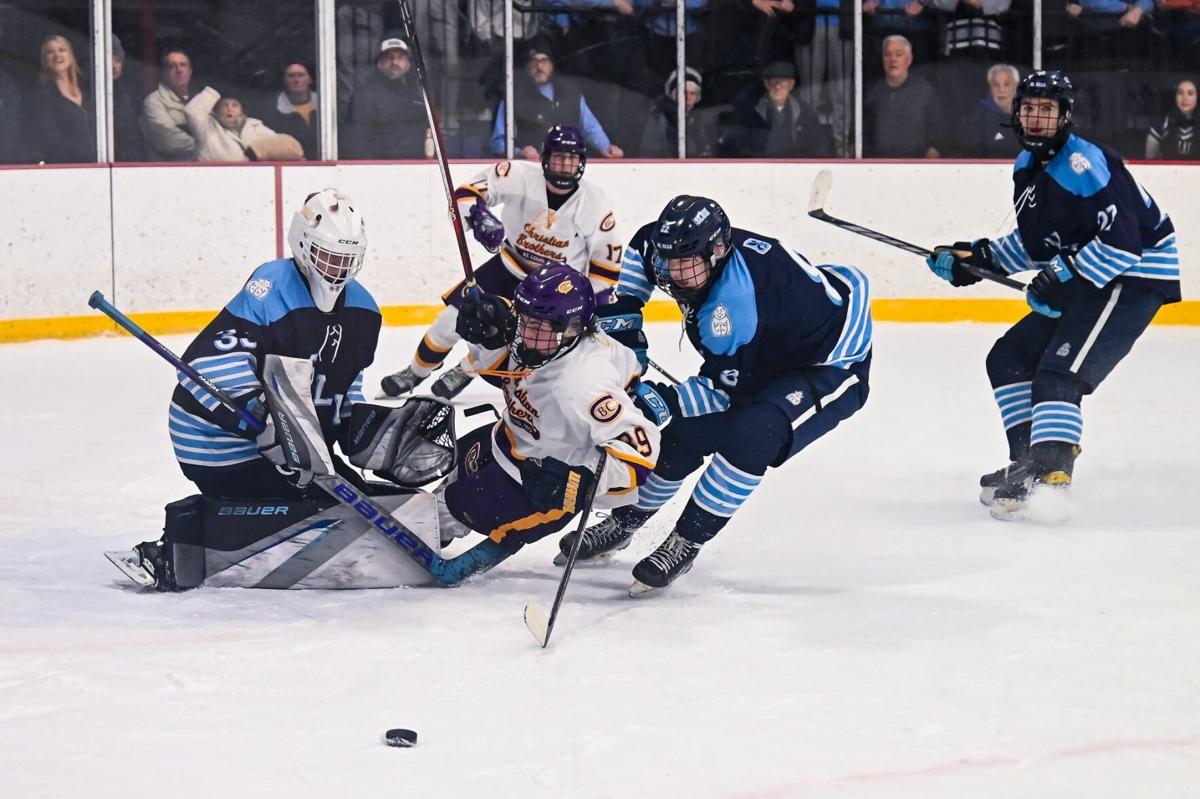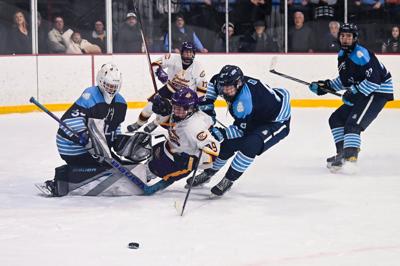The check drew oohs and ahs from the crowd.
A Fort Zumwalt West defender caught a Liberty forward at the perfect angle early in the third period of a Mid States Club Hockey Association game January 16. The hit took the Liberty player head over heels over the half-board and into the Fort Zumwalt West bench.
While the optics are definitely highlight-reel material, the dangerous nature of the sport was on full display. It is easy to focus on the hit sending the player over the boards, but look closer at the exposed skate blades that came close to vulnerable players on the bench or skating by on the ice.
“I tweet about it almost every week, you know, reminders that skates are sharp,” athletic trainer Mike Heffner said. “Sometimes it’s a joke and sometimes not, but it’s about the only way I can convey to people what could happen in the blink of an eye.”
People are also reading…
Heffner’s company, St. Louis Athletic Training Services, provides athletic trainers to all Mid States, Central States, CarShield and Missouri Hockey games.
He has seen almost everything since his first hockey game in 1997.
“The thing that most people don’t understand is that it’s not just the neck,” Heffner said. “We’ve had a couple of wrists that have been cut where the brachial artery is. Maybe two weeks ago, we had a behind-the-knee cut where they cut the popliteal artery, so it severed a hamstring tendon, which was also pretty bad. Skates are very sharp, and they cut without prejudice.”
That includes coaches, referees and even athletic trainers themselves.
Player safety, especially when it comes to neck exposure to sharp skate blades, became a topic of debate within the hockey community following the tragic death of Adam Johnson on October 28, 2023, during a game in England.
Johnson, 29, was involved in a collision with an opposing player, whose skate blade cut Johnson’s neck. The Minnesota native and former Pittsburgh Penguin was later pronounced dead at a hospital.
Though Johnson’s team called it a “freak accident,” it did prompt the English Hockey Association to make neck guards mandatory starting in 2024.
Many other organizations on all levels of hockey are considering similar actions and Mid States is no exception.
Mid States director Ryan Harrison said the club currently highly recommends neck guards, but logistics made a requirement troublesome in the near term.
“Because it kind of was in the middle of the season already, we had just basically come out and said that we highly recommend each team have their teams wear a neck guard,” Harrison said. “I know some teams went and made a neck guard a requirement, but we basically followed what (Missouri Hockey) said, and Mo Hockey basically said that it’s highly recommended that you wear the neck guards.”
Requiring all players to wear neck guards right away would have been problematic. Immediately after Johnson’s death, neck guards were sold out across the country.
Harrison said local hockey equipment stores had up to a six-week waiting period for neck guard orders immediately after the Johnson tragedy.
“I think there’ll be a conversation as far as when the season’s over where we can actually come back and enforce and change that policy,” Harrison said.
CBC coach John Jost is a strong neck guard proponent.
“I think USA Hockey should make it mandatory,” Jost said. “Why not? It’s not that much to wear one of those.”
CBC senior Matthew Jost would not be opposed to making it mandatory.
“I did wear a neck guard growing up, right up probably until high school and then I changed it up because I didn’t like the way it felt on my neck,” Matthew Jost said. “But definitely, that injury scared everyone. I mean, it was tragic and horrifying for everyone to see. It’s something you never really think about could happen, so it’s definitely something you think about now when you’re on the ice.”
Heffner said the danger is ever present with players continuously getting bigger, stronger and faster. It can be especially acute at the high school level when you have players who might be 120 pounds going against those who are 220 pounds.
Changes in equipment may make the game better, but they also pose risks as well. For example, ice skates are much lighter now, making the chances of them flying in the air more prevalent.
“In the early 2000s, a professional hockey player told me that they’d rather have their leg broken than have their feet come up and cut somebody,” Heffner said. “So, they would do everything they can to keep their skates down. And kids these days aren’t taught that. It’s not second nature to them.”
Matthew Jost said he hasn’t personally been part of a close call or had a teammate being involved in a close call with a skate blade.
He said the goriest injury he experienced was getting his ear sliced when he was little.
“It’s funny, my dad was the coach at the time,” Matthew Jost recalled. “I got off the bench complaining that my ear was like hurt really bad after I got hit in the head with a shot. He’s like, ‘Oh, you’re fine. Get back on the ice.’ I got off after the game, took off my helmet and it was filled with blood.”
But serious accidents do happen.
In 1989, goaltender Clint Malarchuk of the Buffalo Sabres survived a dangerous cut to his neck. In 2008, Florida Panthers forward Richard Zednik suffered a life-threatening injury after his throat was slit by a teammate’s skate blade.
Last year, 16-year-old Teddy Balkind died after getting his neck cut during a high school game in Connecticut.
Heffner and his crew are doing everything they can to make sure the St. Louis area doesn’t join that tragic list. Heffner’s athletic trainers have gone through extensive education and training to handle the unthinkable.
“There is definitely the potential every single night for you know, not just a neck laceration, but all the other things that we see in athletics across the board where you have, you know, undiagnosed cardiac problems that turned into a major cardiac event during the game or in practice or whatever,” Heffner said. “The more numbers that you put out there, obviously, the greater chance you’re going to have because you have more instances that something bad can happen.”
Heffner is definitely a proponent for neck guards and any other piece of equipment to keep players safe.
An uneventful night at the office for him and his fellow athletic trainers is a good night at the office.
“For the last 25 years, I felt like every single kid that has played high school hockey is one of my kids,” Heffner said. “I am there to take care of them when they get hurt. You know, I get to see them when they’re at their worst possible moments during their high school hockey career. And we like to, you know, be able to connect with them and take care of them.”












